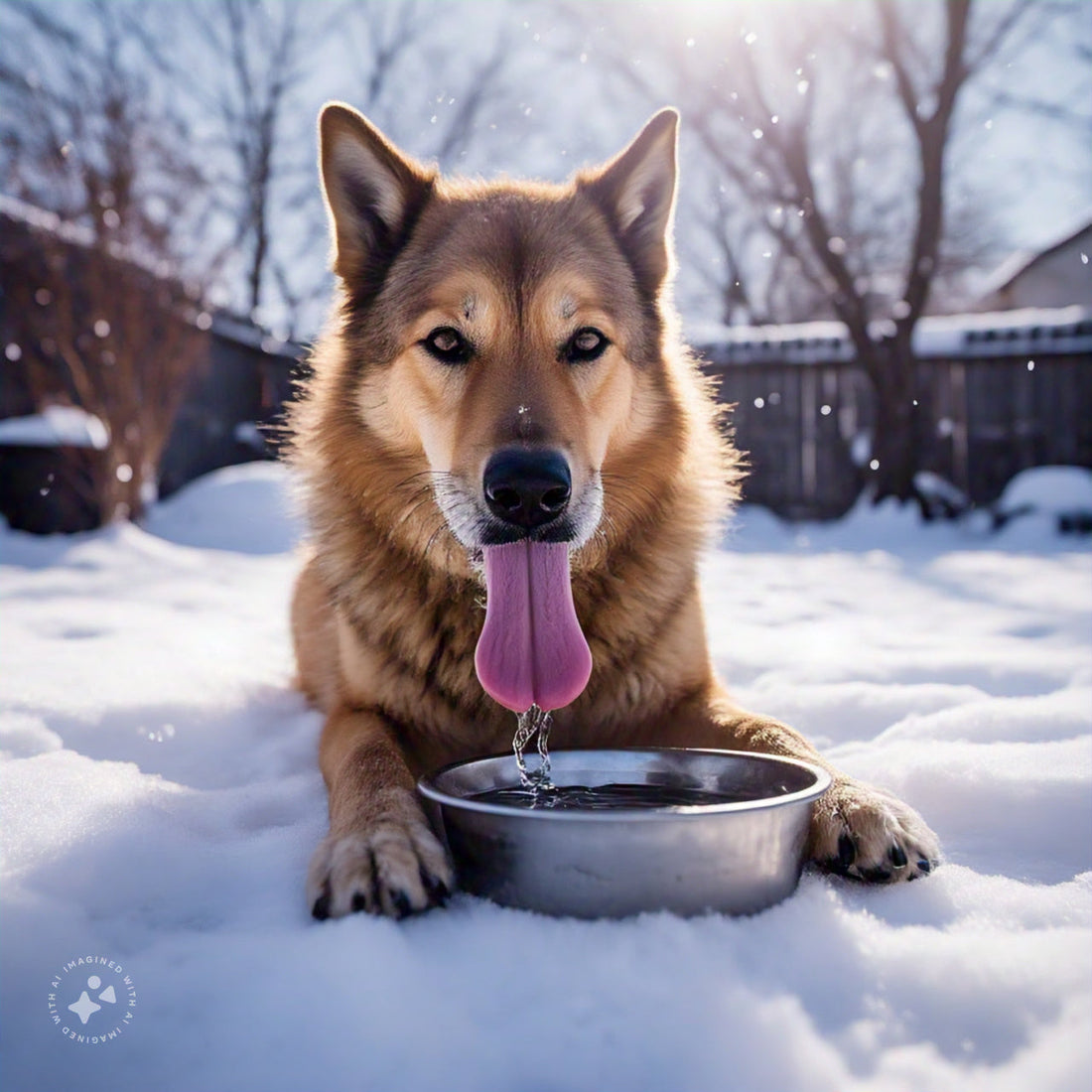
Keeping Your Dog Hydrated During the Winter: Tips for a Healthy Winter Routine
Share
When the temperature drops and the cold winter months roll in, it's easy to think that hydration is no longer a concern for your dog. After all, they aren’t panting in the heat of summer, and they may be spending more time curled up inside where it’s cozy. However, keeping your dog hydrated during the winter is just as important as it is during the summer. In fact, colder weather can pose unique challenges to your dog's hydration needs. In this blog post, we'll explore why winter hydration matters and how you can ensure your dog stays healthy and hydrated throughout the colder months.
1. Why Winter Hydration Matters
While many of us associate dehydration with hot weather, winter can be just as risky for your dog. Cold air can dry out the skin and mucous membranes, and if your dog is not drinking enough water, they can become dehydrated, which can lead to various health issues. Additionally, during winter, dogs may be less inclined to drink water because they’re not as active outside and may not feel thirsty as much.
Proper hydration supports your dog’s digestion, regulates body temperature, helps maintain energy levels, and promotes healthy skin and coat. A dehydrated dog may exhibit lethargy, dry skin, or even more serious symptoms, so it’s essential to be proactive about their hydration during winter.
2. How Cold Weather Affects Your Dog's Hydration
In winter, the dry, cold air can cause moisture loss from your dog’s skin and respiratory system, even if they're not actively playing in the snow. Heated indoor environments, which are common during winter, can also contribute to dehydration by stripping moisture from the air and drying out your dog’s skin and respiratory passages.
Dogs who are less active in winter might not feel the same urgency to drink water, which can lead to them drinking less frequently. Some dogs also drink less when they’re out in the cold, especially if the water outside has frozen or feels too cold to drink comfortably.
3. How to Encourage Drinking
To ensure your dog is staying properly hydrated during the winter months, here are a few tips to encourage them to drink more water:
a) Provide Fresh Water Regularly
Just because it’s cold outside doesn’t mean your dog’s water needs decrease. Always provide fresh, clean water indoors, and be sure to change it frequently to encourage them to drink. Some dogs may be more likely to drink water if it's at room temperature rather than ice-cold. If your dog is outside for walks or playtime, make sure to carry water with you in a portable water bottle and bowl.
b) Use a Water Fountain
Some dogs prefer moving water to still water, and a water fountain can encourage them to drink more. Fountains keep water fresh and cool and provide the added benefit of a continuous flow, which many dogs find appealing. You can invest in an indoor water fountain to ensure your dog always has easy access to fresh water that they’ll be more likely to drink.
c) Moisture-Rich Foods
Adding moisture to your dog’s diet can help them stay hydrated without having to drink large amounts of water. If your dog eats dry kibble, consider adding a bit of warm water or low-sodium broth to soften the food and boost moisture intake. You can also try incorporating wet food into their meals, which contains a higher percentage of water and can contribute to their hydration.
d) Limit Salt Intake
During the winter, you may be walking your dog on roads or sidewalks that have been salted to prevent ice buildup. While it’s important to protect your dog’s paws from salt, it’s also important to keep their salt intake in check. Excessive salt can make your dog thirsty and cause them to drink more than they need, which can upset their electrolyte balance. Wipe your dog’s paws after each walk to remove any salt residue and limit their exposure to harmful chemicals.
4. Monitor Outdoor Drinking Situations
If your dog spends time outside during the winter months, it’s essential to keep an eye on their drinking habits. Outdoor water sources like puddles or snow can be dangerous and should be avoided. Puddles may contain harmful bacteria, chemicals, or antifreeze, which are toxic to dogs. Instead, bring a portable water bowl and fresh water for outdoor excursions, whether you’re walking in the park or enjoying time in the yard.
In addition, be mindful of outdoor water sources freezing. If your dog is outside for long periods, ensure they have access to unfrozen water at all times. Portable heated bowls are available to help prevent water from freezing in extremely cold weather.
5. Keep Your Dog Active
While winter may keep your dog indoors more than usual, it’s still important to keep them moving to maintain their overall health and hydration. Regular exercise stimulates thirst and encourages drinking. A daily walk or indoor playtime will help your dog stay active and regulate their body temperature. Just be sure to monitor your dog’s activity and adjust for the cold. Always bring water on walks, especially in colder temperatures.
6. Watch for Signs of Dehydration
Dehydration can be harder to spot in winter because your dog may not exhibit the typical signs like excessive panting. However, there are still signs to look out for, including:
- Dry or tacky gums
- Lethargy or reduced energy
- Sunken eyes
- Loss of appetite
- Dry skin or coat
- Less frequent urination or dark-colored urine
If you notice any of these symptoms, make sure to increase your dog’s water intake and consult your veterinarian if the signs persist or worsen.
